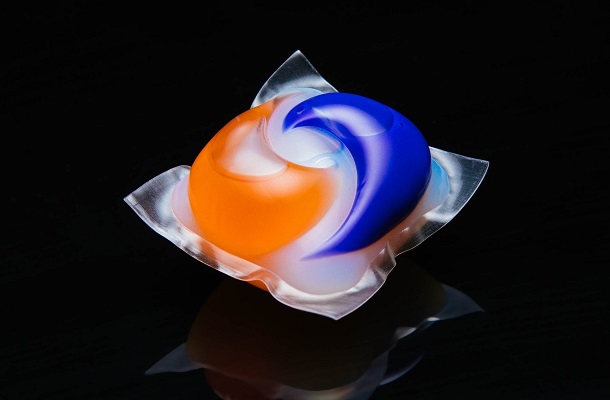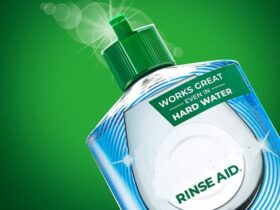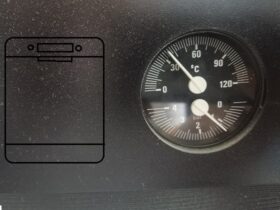Ever heard of salt in dishwashers? I’ve settled into my new home with a dishwasher and without doing any research, when my dishwasher was running low on salt, I quickly poured my regular table salt in. To my demise, it was a big mistake as the dishwasher immediately went into shutdown mode and required maintenance.
So what kind of salt is for dishwashers? Why is important to use it? Can you miss pouring it in? Learn all about it to prevent accidents I’ve experienced.
IN THIS ARTICLE:
What Is It And What It Does?
Dishwasher salt is pure sodium chloride that’s coarsely granulated to dissolve slower. The primary use is that it helps fight limescale build-up on your filter and other dishwasher components. If your dishes are not as clean as they used to be, it might be a low-salt issue. Dishwashers tend to have a water softening system and salt is required to keep them working properly.
Do I Need Salt In My Dishwasher?
No matter the area you live in or the dishwasher you use, you’ll need to put salt in your dishwasher. Here are situations where you’ll need it:
Hard Water – If you live in a hard water area, dishwasher salt can save your dishwasher’s life as it will soften the water. Limescale builds up quicker on your dishwasher in hard water areas and costly repairs will likely be needed sooner
Soft Water – Even if you live in a soft water area, you’ll need to put salt in your dishwasher as soft water doesn’t automatically mean there are no minerals in the water. The only benefit is that you’ll need to replenish the salt supplies later.
All-In-One Tablets – Although all-in-one tablets are branded as you don’t need to use a rinse aid or salt anymore, for optimal dishwasher performance and results, you should still use both.


Reactivation Salt – If your dishwasher doesn’t run frequently or it hasn’t been used in a while, you’ll have to use special reactivation salt to re-activate the water softener system in your hard water dishwasher.
What Happens If You Don’t Put Dishwasher Salt?
Some of the consequences of not using salt in your dishwasher are:
- Cloudy, milky glasses, and spots on dishes
- Dishes left unwashed
- Noisy dishwasher
- Costly repairs due to mineral build-up on the engine and other components


What Type Of Salt Is Suitable For Dishwasher?
The dishwasher requires large-grained salt called Sodium chloride or salt crystals. It’s the same type as table salt but the biggest and most important difference is that table salt is fine while dishwasher salt is coarse. One of the types of sodium chloride is Rock salt which is often used in dishwashers.


What Salt Is Forbidden For Dishwasher?
It’s table/Kosher/sea salt. It’s too finely graned which can clog the dishwasher, and contains additives that increase water hardness. It can be used in DIY salt replacements but only if it’s large-grained.
How Do You Put Salt In A Dishwasher?
Amount
The amount will vary. You’ll want to pour the salt into the reservoir using a funnel until it’s filled up to the top. Don’t get the funnel wet as the salt won’t pass through if it does. Most dishwashers have reservoirs that can contain 1-1.5 kg of salt at once.
Placement Location
The salt reservoir is located on the bottom of the dishwasher and most likely to the side.
Clean Up
Clean up any salt that you might have spilled as your dishes might not come out clean and will be a little salty for the first cycle you run. The cap needs to be placed back tightly since the whole system could break if detergent gets into the reservoir.
Refilling
Refill times will vary. It’ll usually happen every 3-4 months but if you use your dishwasher daily, this is likely to have to take place every month. If your dishes aren’t coming out as clean and have too many spots, it’s also a sign that you have to refill them with salt. Many modern dishwashers have an indicator to tell you that the salt levels are low and it needs replacing. it’s usually an ”S” symbol.
Adding Salt For The First Time
When it’s your first time using the dishwasher, you need to unscrew the cap and fill the reservoir with water so that it reaches the top of the opening. After that, some water will always be present inside. So every next time you pour the salt, it’s normal the dishwasher salt reservoir is full of water.
To Wrap It Up
If your dishwasher requires it, you should always use dishwasher salt. Filling it up is easy and does differ if it’s your first-time use or if you’re just refilling the reservoir. Unless it’s 100%, coarsely granulated salt, you can’t use any other salt in your dishwasher than the one specifically designed for it. The ones you can use as a replacement will cost more than if you just buy the regular stuff. Not to worry, the salt doesn’t ever get into contact with your dishes.




















Leave a Reply